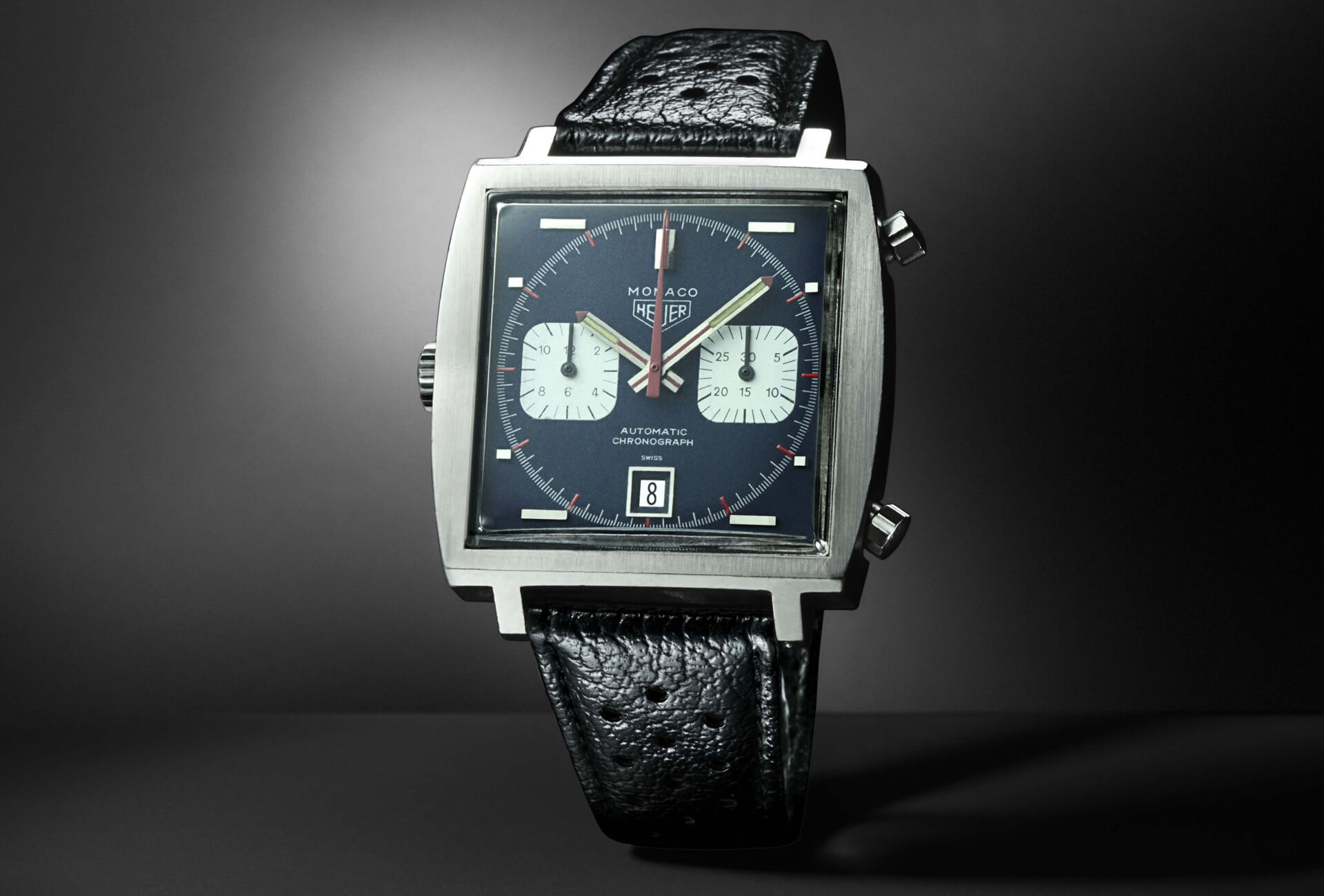TAG Heuer Monaco 1969-1979 Limited Edition – Kicking Off the 50th-Anniversary Celebrations (Hands-On)
The Monaco is back on the grid as TAG Heuer revs up the 50th-birthday celebrations of its icon.

Even after a half-century of life, the TAG Heuer Monaco is still one of the most iconic chronographs on the market. The fame of the Monaco owes much to its cameo role on the wrist of Steve McQueen in the 1971 movie Le Mans. Back then, McQueen was known as “The King of Cool”. At the height of his popularity, his performance as racer Michael Delaney is, without doubt, one of his most cult roles. Although the Monaco shot to fame on Steve McQueen’s wrist, the genesis of this unconventional square chronograph coincided with a genuine technological revolution (and a frantic race) to launch the world’s first automatic chronograph.

Short history of the Heuer Monaco
The 1960s and 1970s were a golden age for motor racing, one of the most exciting (and dangerous) sports of the time. The period was also the heyday of the mechanical chronograph with the birth of a number of horological icons. Back then, before electronic race timing, the horological and automotive worlds were closely connected. Timing was essential and horological designs were driven by functionality and performance. Although Heuer watches had made a name for themselves since the late 19th century, the brand’s modern age fame owes much to motor racing, to the point of being inextricably linked to it. Under the leadership of Jack Heuer (great-grandson of the founder), the company focused on chronographs and launched a series of iconic models like the Carrera, the Autavia or the Camaro.

In the 1960s, the stopwatch was modernized and watchmakers embarked on a genuine race to develop the first automatic chronograph. Three parties developed their own project, each with their own technical vision: Zenith, Seiko and a consortium formed by Heuer, Breitling, Hamilton-Buren and Dubois-Depraz. The Chronomatic Caliber 11 created by this consortium was a modular construction based on a micro-rotor Buren movement and a Dubois-Depraz chronograph mechanism. Although the question about which was the first automatic chronograph is still debated, all three projects were unveiled in 1969, the same year that Heuer released the legendary square chronograph, a.k.a. the Monaco.

Named by Jack Heuer after the Monte Carlo Grand Prix race, the “Monaco” was one of the models to be powered with the new Chronomatic movement. A radical design breaking away from the traditional round racing chronographs, the model stood out with its angular square-shaped case fitted with a pair of pushers at 2 and 4 o’clock and its crown at 9 o’clock. This unconventional case was designed and manufactured with case maker Erwin Piquerez and was presented as the world’s first waterproof, rectangular, automatic chronograph. A few months later, this quirky square chronograph had made its way to the wrists of Jo Siffert and Steve McQueen.
Act 1 – The TAG Heuer Monaco 1969-1979 Limited Edition
In 2019, as the Heuer Monaco turns 50, TAG Heuer will be launching 5 limited edition watches inspired by each of the decades from 1969 to 2019. The first timepiece to be presented is inspired by the 1970s and has just been unveiled on the occasion of the 2019 F1 Monaco Grand Prix. It is named the TAG Heuer Monaco 1969-1979 Limited Edition and here is our first take on it.
This limited edition of just 169 pieces (yes, you’ll have to step on the gas if you want one!) stands out with its green dial with brown and yellow accents and a Geneva-stripe pattern. The facetted hour markers and square registers are presented in the traditional Monaco style, meaning sharply defined and horizontally positioned. The facetted hours and minutes hands are inlaid with luminescent material.
The square angular case is similar to recent Monaco watches, with its 39mm x 39mm proportions. This TAG Heuer Monaco 1969-1979 Limited Edition is made of stainless steel with alternating brushed and polished surfaces. The chronograph pushers are on the right of the case and the crown on the left. The box sapphire crystal is slightly raised. Secured by four screws, the full caseback is engraved with the original “Monaco Heuer” logo and the caption “1 out of 169”. Water-resistance is of 100m.
Inside the TAG Heuer Monaco 1969-1979 Limited Edition is the modern Calibre 11. This automatic chronograph movement is based on a Sellita SW300-1 with a Dubois-Depraz module on top. Like the original “Chronomatic” Heuer Calibre 11, the base movement is rotated 180-degrees to position the crown on the left and the pushers on the right. Running at 4Hz, this automatic chronograph can store up to 40 hours of power reserve when fully wound. It displays central hours, minutes and chronograph seconds, a small seconds at 3 o’clock, a 30-minute counter at 9 o’clock and the date at 6 o’clock. A stop-seconds mechanism enables precise time setting.
The TAG Heuer Monaco is worn on a brown automotive-inspired perforated calfskin strap. It is secured to the wrist by a steel folding buckle in the shape of the Heuer shield. This TAG Heuer Monaco 1969-1979 Limited Edition reference CAW211V.FC6466 is delivered in a special presentation box inspired by the one used for the original 1969 Monaco. Price is set at CHF 6,400. More details at www.tagheuer.com.














3 responses
Ok, I’ll be the one to say it. This is ridiculously expensive. Avigation Big Eye eats this for breakfast.
I couldn’t agree with “Just Another Guy On The Web” more… way too expensive.. price needs to go down at least 30 per cent..
Legend, killer dial, rare